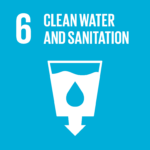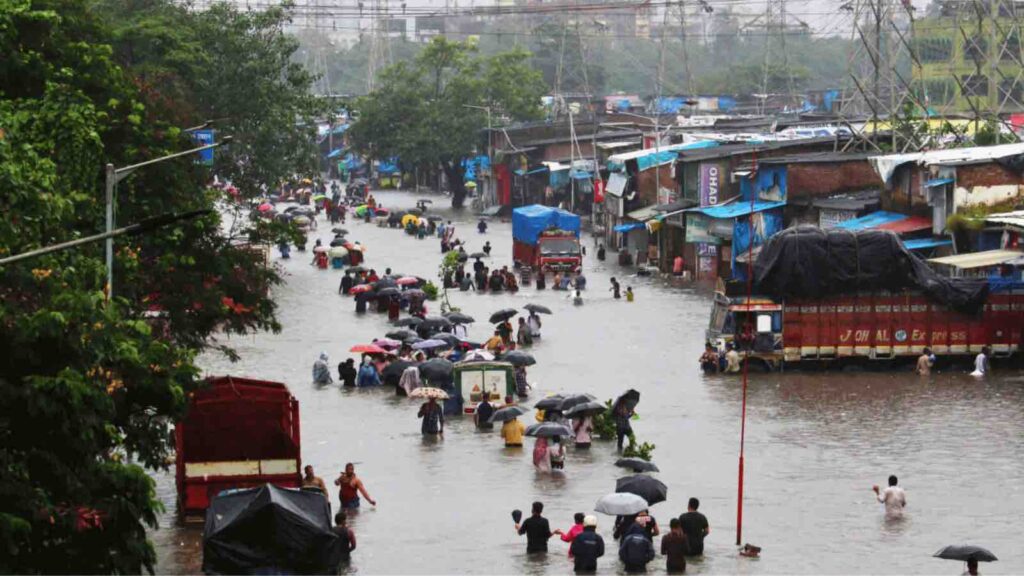From rampant floods that destroy homes and farmlands, to food scarcity caused by ruined harvests and intense monsoon – echo the reality of climate change in Asia.
China, India, and the Korean Peninsula are currently grappling with the perils of climate change, evidenced by the extreme weather events wreaking havoc across these Asian regions. Rainstorms of exceptional intensity have prompted China’s State Flood Control and Drought Relief Headquarters to initiate a level-IV emergency response in four provinces – East China’s Jiangsu and Shandong, Southwest China’s Sichuan, and Northwest China’s Gansu. These regions are bracing for substantial rainfall, expected to trigger widespread flooding and waterlogging.
RELEVANT SUSTAINABLE GOALS



China’s Flood Mayhem
China’s significant grain production areas, Shandong and Henan, are particularly susceptible, threatening critical food supply chains. The severity of the impact is contingent on the duration of the rainfall and the size of the affected area, highlighting the necessity for preemptive action. Comprehensive flood prevention measures, including strategic livestock and populace relocation, are being implemented in low-lying regions, according to Li Guoxiang of the Chinese Academy of Social Sciences.
China’s robust disaster prevention and emergency response system is crucial in mitigating the potential losses. Ministries of Water Resources, Natural Resources, and the Meteorological Administration are pooling resources to support the four provinces most at risk. Preventative measures include tips for averting geological disasters and ensuring the safety of lives and property.
The challenges of flood control and drought prevention coexist, illustrating the increasingly erratic nature of weather patterns. Successful management hinges on accurate forecasting, strategic resource allocation, and the adoption of innovative technologies like the Internet of Things, big data, and artificial intelligence. These advancements have helped China extend its national rainfall forecast from 20 days to 30 days, with a 90% accuracy rate during critical periods.
Climate Change on Indian Monsoon : Thousands displaced in Delhi as Yamuna breaches 45-year record
The Indian capital of Delhi, also lashed by heavy rains, is dealing with its fair share of challenges. Heavy rain persisted in various parts of the country including Himachal Pradesh, Punjab, Haryana. In Delhi, CM Arvind Kejriwal called for a meeting with all ministers, officers and mayor over the situation in the national capital due to incessant rainfall. As per Atul Garg, Delhi Fire Service, a total of total 13 incidents of house collapse were reported in the national capital.
Meanwhile, IMD issued a red alert for several districts of Himachal Pradesh and an orange alert for three districts for the next 48 hours as the state continued to receive heavy rainfall. With a warming climate, more moisture will be held in the atmosphere, leading to heavier rainfall, consequently, inter-annual variability of the monsoon will increase in future.
Climate change has dramatically reshaped India’s monsoon seasons, introducing a host of unprecedented challenges. Variations in monsoon tracks, low-pressure systems deviating southward, and unexpected flash floods all illustrate this transformation. Strikingly, these alterations have induced more intense and frequent weather extremes in regions that historically saw scant monsoon rainfall. With these shifts threatening food security, it’s clear that their socio-economic impact is imminent.
The Korean Peninsula’s Disaster Response: Coping with Border Floods
Similarly, the Korean Peninsula faces the threat of heavy rains, adding to the pre-existing challenges in the Democratic People’s Republic of Korea (DPRK), where the food situation is already precarious. Predictions of substantial rainfall in North Korea have prompted South Korea’s Ministry of the Interior and Safety to call for diligent monitoring of river water levels and an emergency response in the border area.
The effects of extreme weather events – from rampant floods that destroy homes and farmlands, to food scarcity caused by ruined harvests – echo the reality of climate change. The increasing frequency of such extreme weather events underscores the urgency of global action on climate change, as the bell tolls louder for the necessity of resilient, sustainable, and adaptive societies.
The signs are clear: climate change isn’t a distant threat, but a stark reality affecting millions of lives today. A focus on climate resilience and sustainable development is no longer an option, but a necessity. The time to act is now.
Lead image courtesy of Monsoon flooding in Mumbai this month. Himanshu Bhatt / Nurphoto Via Getty Images
You may also be interested in :
El Niño Predicted To Trigger Extreme Heat In 2023, Warns Climate Scientist Community


